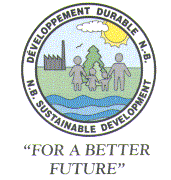
The strategy was developed on a watershed basis. The people involved in this forum represented all sectors of New Brunswick society such as government, business, industry, academics and the public. The sustainable development strategy for the province was a result of collaborative efforts and open dialogue among these groups. Meanwhile, in 1991, water quality problems escalated in Bouctouche bay, situated along the south east coast of New Brunswick. There were increasing closures of oyster culture harvesting due to the high fecal coliform counts which are generally a result of inadequate septic systems.
It became evident that the closures created hardship on the local economy. Local businesses in the town of Bouctouche appealed to the government to do something about the problem. As a result, the matter was brought to the Department of Fisheries and Aquaculture where a cabinet approved plan was developed, on a sustainable development basis, to address the situation. The Department sought and obtained resources from the Environmental Trust Fund to support the plan and the process began to take shape in 1992. At the same time that difficulties were taking place in Bouctouche, sustainable development was adopted as a provincial policy in New Brunswick.
The combination of the adoption of the policy, funding from the Environmental Trust Fund and the consensus that watersheds should be the main target for implementing sustainable development in the province, provided the framework to address the problem in the Bouctouche area. Since no sustainable development implementation process was known, the Bouctouche Project was set up to develop an implementation model from 1992-1995.
The first step was to establish a Task Force, consisting of senior provincial and federal leaders with direct responsibilities to give overall guidance, authority and government commitment to the project. Then, a multi-agency Working Group, comprised of all levels of government, community and business, was established to translate guidance from the Task Force into action. It was found that the creation of two committees were necessary: a Technical Committee, which was responsible for policy and planning priorities, and a Communications Committee, which was responsible for promotions and public education. Finally, a Project Team was organized to initiate the assignment in the field. Using this model, an overall provincial network was designed to cover all watersheds in the province. Due to the large number, of over 200 watersheds in New Brunswick, they were all condensed into 7 sustainable development co-ordination areas in order to facilitate the process.
In order to test and refine the Bouctouche model, the Cocagne Sustainable Development Project was implemented from 1994-1997. As a result, the model was expanded to better fit the multi-watershed basis for the provincial network. A principal element of the model is the incorporation of the infrastructure within existing departmental mandates and resources through a re-prioritization of responsibilities. Due to similar problems in other New Brunswick watersheds, more sustainable development projects have been initiated such as the Caraquet project, which is soon to include Shippagan, and one in the Bathurst area. Because Bathurst is the newest project, it is being utilized to develop a generic computer model of implementation to be used as a demonstration site for this process on an international basis.
The success of the model is largely attributed to the open process that has been created between government and the public. Through public education on sustainable development, the holding of public forums, where concerns can be expressed, and the prompt response of government to the public's questions, enhanced confidence in the relationship is generated. As a result, there has been a positive response to sustainable development implementation in New Brunswick. Through open communication and the collective efforts of government, businesses and communities throughout the province, we are closer to achieving our goal of developing a new way of life in New Brunswick through sustainable development. A way of life which entails environment and economic integration for a better future for us all.
For further information on sustainable development and the implementation of sustainable development in New Brunswick please contact:
Dr. Barry C. Jones
Sustainable Development Coordinator
Department of Fisheries and Aquaculture
P.O. Box 6000
Fredericton (NB)
E3B 5H1
CANADA
Tel.: (506) 444-5749
Fax: (506) 453-5210
E-Mail: barryj@gnb.ca